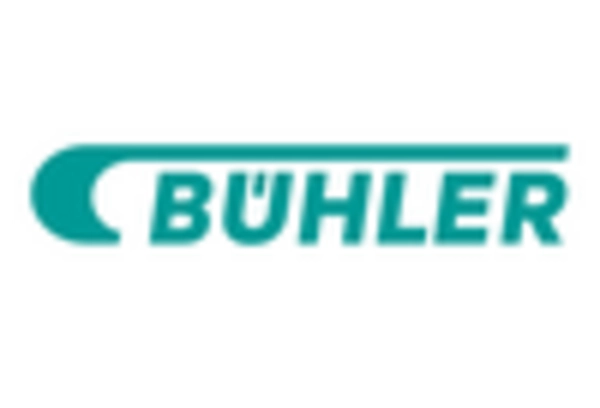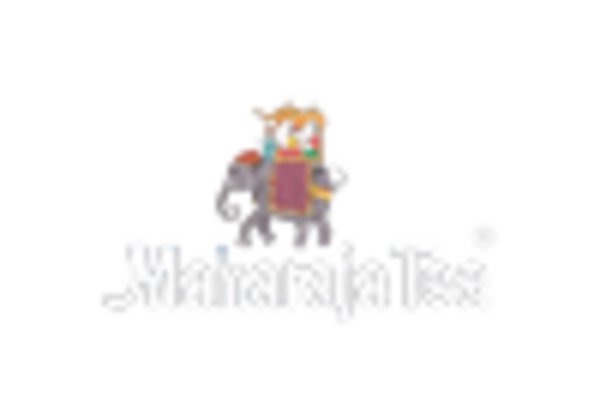The Tea Processing Equipment Market is currently characterized by a dynamic competitive landscape, driven by increasing demand for high-quality tea products and the need for efficient processing technologies. Key players such as Bühler AG (CH), Hunan Jinfeng Tea Machinery Co., Ltd. (CN), and Maharaja Tea (IN) are strategically positioning themselves through innovation and regional expansion. Bühler AG (CH) focuses on enhancing its technological capabilities, particularly in automation and digital solutions, which appears to be a response to the growing trend of Industry 4.0. Meanwhile, Hunan Jinfeng Tea Machinery Co., Ltd. (CN) emphasizes local manufacturing to cater to the specific needs of Asian markets, thereby enhancing its competitive edge. Maharaja Tea (IN) is actively pursuing partnerships with local tea producers to streamline its supply chain, indicating a trend towards localized operations that could reshape market dynamics.
The market structure is moderately fragmented, with numerous players vying for market share. This fragmentation is indicative of a competitive environment where local manufacturers can thrive alongside larger multinational corporations. Key business tactics such as supply chain optimization and localized manufacturing are becoming increasingly prevalent, as companies seek to reduce costs and improve efficiency. The collective influence of these strategies suggests a market that is responsive to both consumer demands and operational challenges, fostering a competitive atmosphere that encourages innovation.
In August 2025, Bühler AG (CH) announced the launch of a new line of automated tea processing equipment designed to enhance production efficiency and reduce waste. This strategic move is likely to position the company as a leader in sustainable processing technologies, aligning with global trends towards environmental responsibility. The introduction of such advanced machinery could potentially set new industry standards, compelling competitors to innovate in order to keep pace.
In September 2025, Hunan Jinfeng Tea Machinery Co., Ltd. (CN) expanded its manufacturing capabilities by establishing a new facility in Hunan province. This expansion is indicative of the company's commitment to meeting the rising demand for tea processing equipment in the region. By localizing production, Hunan Jinfeng may not only reduce lead times but also enhance its ability to respond to market fluctuations, thereby solidifying its market position.
In July 2025, Maharaja Tea (IN) entered into a strategic partnership with a leading technology firm to integrate AI-driven analytics into its production processes. This collaboration is expected to optimize operational efficiency and improve product quality, reflecting a broader trend of digital transformation within the industry. Such advancements may provide Maharaja Tea with a competitive advantage, as data-driven decision-making becomes increasingly critical in the tea processing sector.
As of October 2025, the competitive trends within the Tea Processing Equipment Market are increasingly defined by digitalization, sustainability, and the integration of advanced technologies such as AI. Strategic alliances are playing a pivotal role in shaping the current landscape, enabling companies to leverage shared expertise and resources. Looking ahead, it appears that competitive differentiation will increasingly pivot from traditional price-based competition to a focus on innovation, technological advancement, and supply chain reliability. This shift may ultimately redefine the parameters of success in the market, compelling players to adapt and evolve in response to emerging trends.


















Leave a Comment